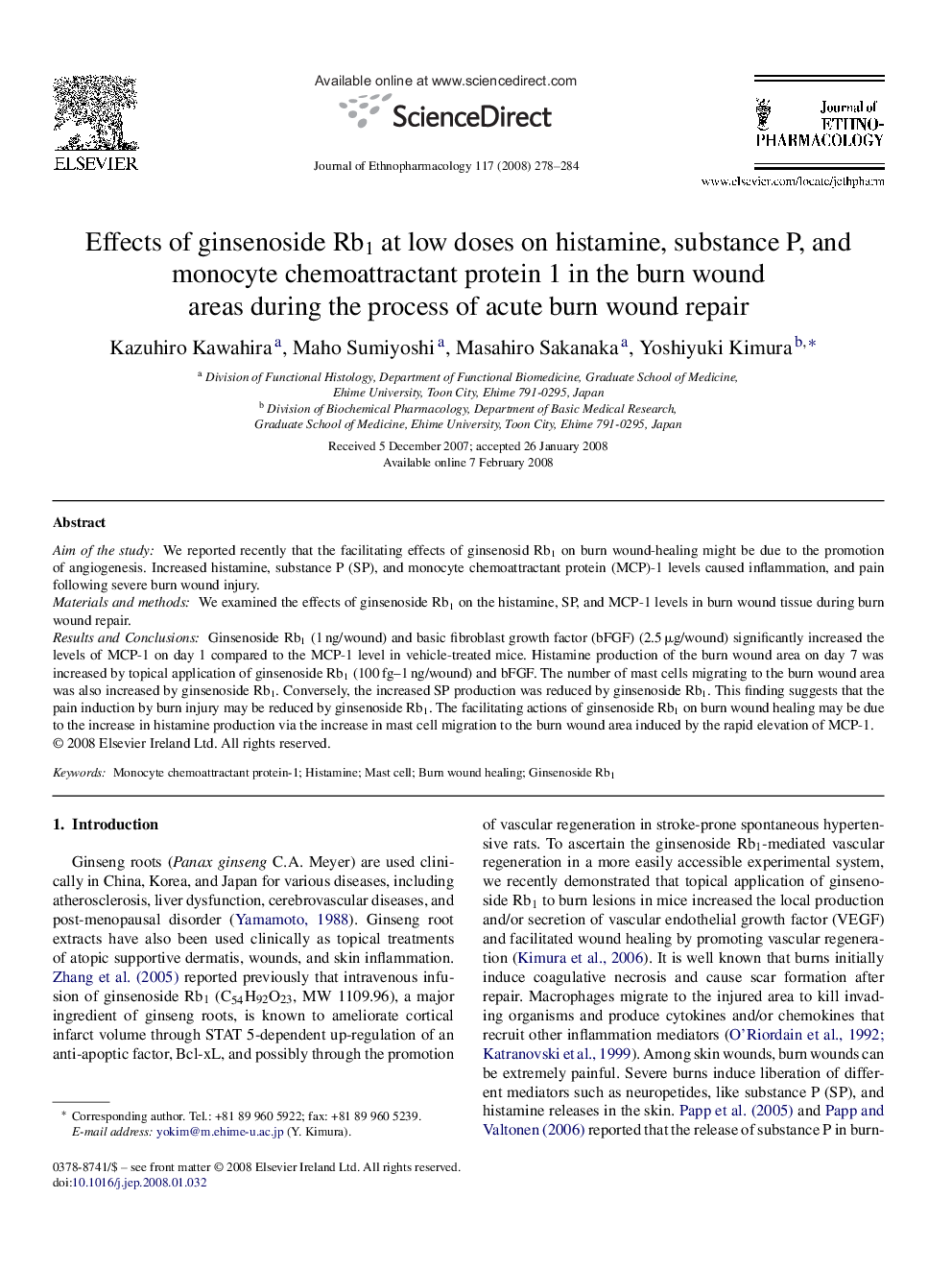| Article ID | Journal | Published Year | Pages | File Type |
|---|---|---|---|---|
| 2547861 | Journal of Ethnopharmacology | 2008 | 7 Pages |
Aim of the studyWe reported recently that the facilitating effects of ginsenosid Rb1 on burn wound-healing might be due to the promotion of angiogenesis. Increased histamine, substance P (SP), and monocyte chemoattractant protein (MCP)-1 levels caused inflammation, and pain following severe burn wound injury.Materials and methodsWe examined the effects of ginsenoside Rb1 on the histamine, SP, and MCP-1 levels in burn wound tissue during burn wound repair.Results and ConclusionsGinsenoside Rb1 (1 ng/wound) and basic fibroblast growth factor (bFGF) (2.5 μg/wound) significantly increased the levels of MCP-1 on day 1 compared to the MCP-1 level in vehicle-treated mice. Histamine production of the burn wound area on day 7 was increased by topical application of ginsenoside Rb1 (100 fg–1 ng/wound) and bFGF. The number of mast cells migrating to the burn wound area was also increased by ginsenoside Rb1. Conversely, the increased SP production was reduced by ginsenoside Rb1. This finding suggests that the pain induction by burn injury may be reduced by ginsenoside Rb1. The facilitating actions of ginsenoside Rb1 on burn wound healing may be due to the increase in histamine production via the increase in mast cell migration to the burn wound area induced by the rapid elevation of MCP-1.
